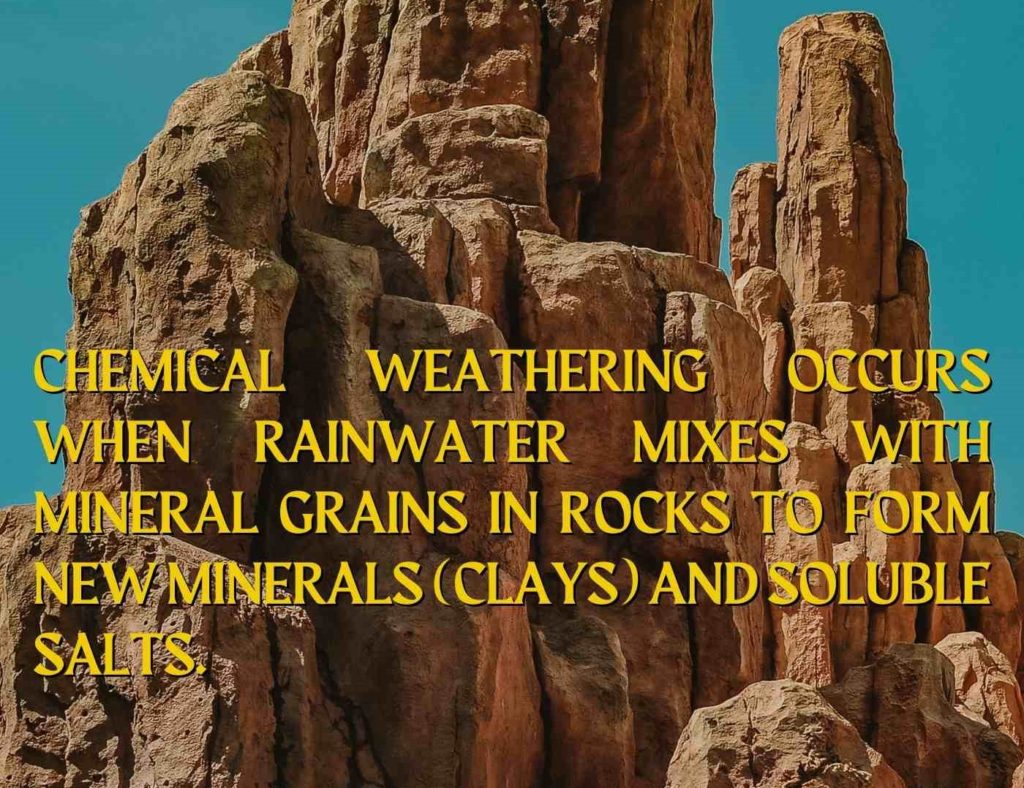Chemical weathering occurs when rainwater mixes with mineral grains in rocks to form new minerals (clays) and soluble salts. These processes are more common when the water is somewhat acidic.

Table of Contents
Science Behind Chemical Weathering
Chemical weathering is the process by which chemicals in rainfall alter the minerals in a rock. Rainwater is acidic as carbon dioxide from the atmosphere dissolves in it. When rainfall comes into touch with minerals in the rock, a reaction would occur, resulting in weathering. Carbonation, hydrolysis, oxidation, acidification, and lichens are the five forms of chemical weathering (living organisms). Water, carbon dioxide, and oxygen are important agents of chemical weathering.
Chemical weathering is the chemical process that degrades and disintegrates rock. Oxidation, hydrolysis, and carbonation are examples of these processes. These processes either create or destroy minerals, affecting the mineral makeup of the rock.
Acidification occurs when acidic rain falls to Earth and degrades the chemical constitution of the soil. Acidic rain also corrodes man-made structures, degrading their chemical integrity.
Chemical weathering occurs when interactions between a rock and another material break down the rock, causing fragments to fall away.
The reaction of rock minerals with oxygen changes the mineral composition of the rock. When minerals in rock oxidize, they become less weather resistant. When iron, a common mineral, is oxidized, it turns red or rust coloured.
Carbonation is the reaction of rock minerals with carbonic acid. When water and carbon dioxide react, carbonic acid is generated. Carbonic acid dissolves or degrades minerals in the rock.
Water causes a chemical process known as hydrolysis. Water alters the chemical composition and size of minerals in the rock, making them more weather resistant.
The absorption of water into the mineral structure is referred to as hydration. The absorption of water by anhydrite, which results in the creation of gypsum, is an excellent example of hydration. Hydration causes volume expansion as well as rock deformation.
More Interesting Topics
Boiling of Water| Phenomenon and Factors Affecting
Specific Heat of Water
Soft Water vs. Hard Water
Mechanical weathering
How Many Cups in a Gallon? Cups to Pints, Quarts
Is Nh3 Polar?
Molar Mass of Acetic Acid
What Is an Au Pair|Au Pair Meaning & Average pay
- BCl3 Lewis Structure in four simple steps - November 1, 2023
- PH3 Lewis Structure in four simple steps - October 8, 2023
- PF3 Lewis structure in four simple steps - September 24, 2023



